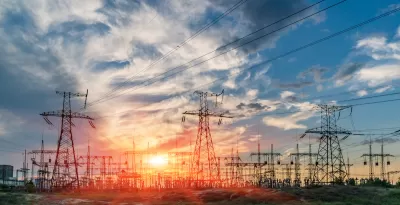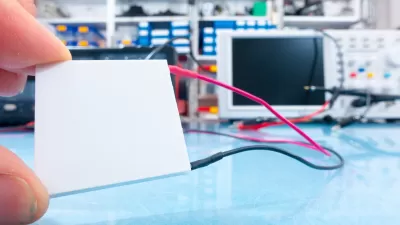Eliminating fossil fuels means shifting how electricity is produced and distributed from the source.

Writing in High Country News, Jonathan Thompson warns that the movement toward electrification will only improve sustainability if decarbonization reaches power generating plants as well. “The electric power sector is the nation’s second-largest emitter of greenhouse gases, after transportation. Electrifying everything might do little more than redistribute emissions from buildings and cars to the power grid.”
According to Thommpson, “The electric power sector needs to quit fossil fuels, cold turkey. And that requires massive investments in new power sources and innovation to remake the grid for a carbon-free world.”
Thompson goes on to highlight twelve methods for decarbonizing the grid, including eliminating coal and natural gas power plants, promoting efforts to build better batteries to store renewable energy, growing grid interconnections, and making buildings and vehicles more efficient so that they require less energy to begin with.
For example, ‘geographical smoothing’ can help states share and transmit excess energy. “This will require centralizing operations at what are now dozens of distinct power grids across the West—and building more long-distance transmission.” On the flip side, microgrids that are integrated but can also operate independently can stave off blackouts when disasters occur.
FULL STORY: 12 not-so-easy steps to decarbonize the grid

Planetizen Federal Action Tracker
A weekly monitor of how Trump’s orders and actions are impacting planners and planning in America.

The Simple Legislative Tool Transforming Vacant Downtowns
In California, Michigan and Georgia, an easy win is bringing dollars — and delight — back to city centers.

San Francisco's School District Spent $105M To Build Affordable Housing for Teachers — And That's Just the Beginning
SFUSD joins a growing list of school districts using their land holdings to address housing affordability challenges faced by their own employees.

In More Metros Than You’d Think, Suburbs are Now More Expensive Than the City
If you're moving to the burbs to save on square footage, data shows you should think again.

The States Losing Rural Delivery Rooms at an Alarming Pace
In some states, as few as 9% of rural hospitals still deliver babies. As a result, rising pre-term births, no adequate pre-term care and "harrowing" close calls are a growing reality.

The Small South Asian Republic Going all in on EVs
Thanks to one simple policy change less than five years ago, 65% of new cars in this Himalayan country are now electric.
Urban Design for Planners 1: Software Tools
This six-course series explores essential urban design concepts using open source software and equips planners with the tools they need to participate fully in the urban design process.
Planning for Universal Design
Learn the tools for implementing Universal Design in planning regulations.
Smith Gee Studio
City of Charlotte
City of Camden Redevelopment Agency
City of Astoria
Transportation Research & Education Center (TREC) at Portland State University
US High Speed Rail Association
City of Camden Redevelopment Agency
Municipality of Princeton (NJ)





























